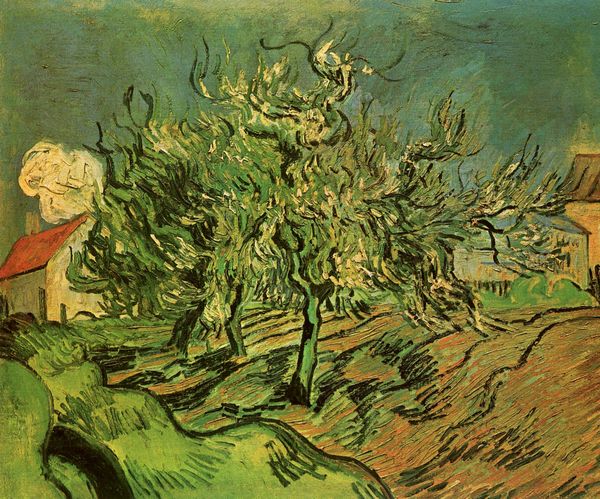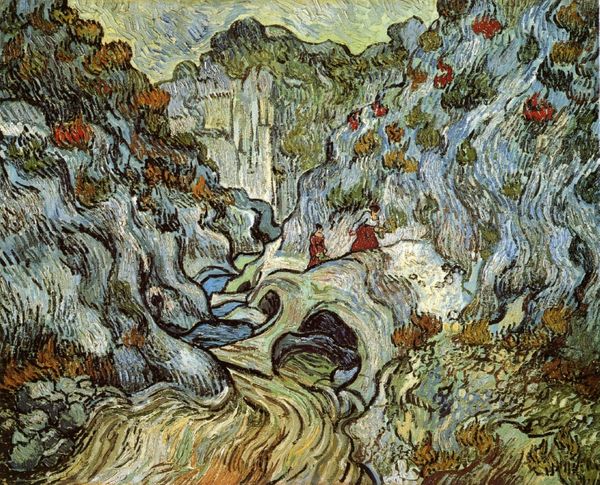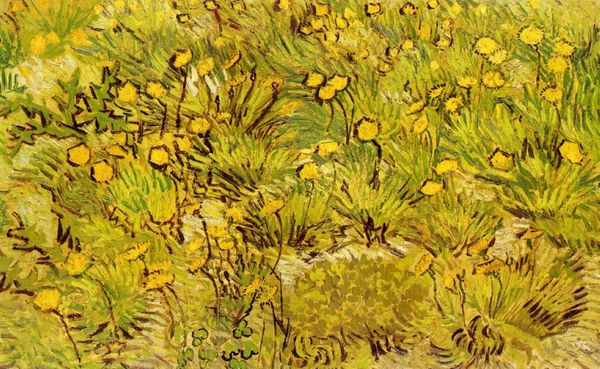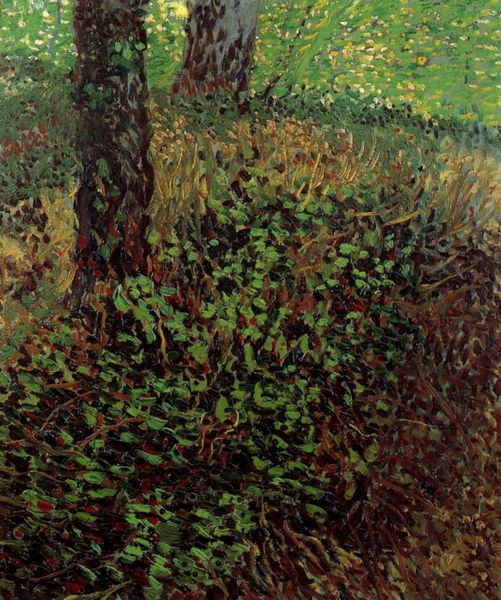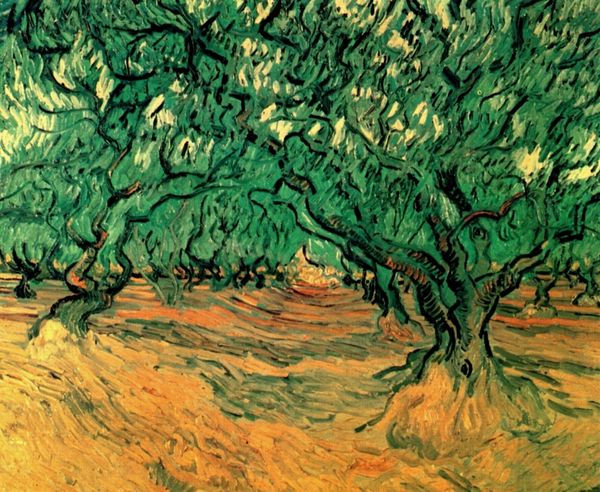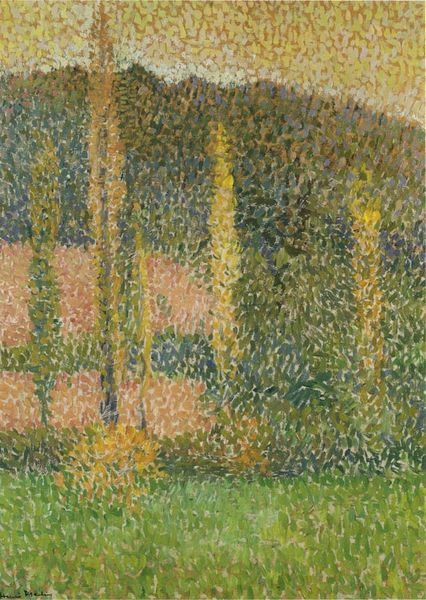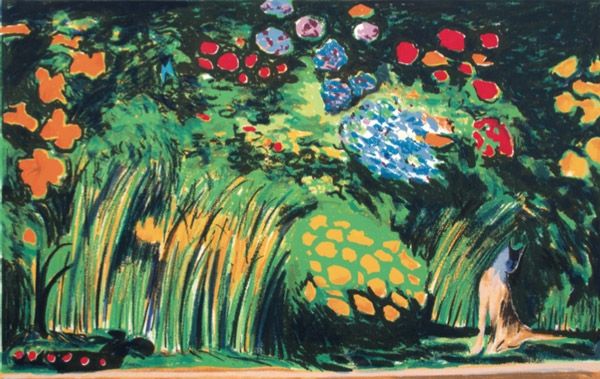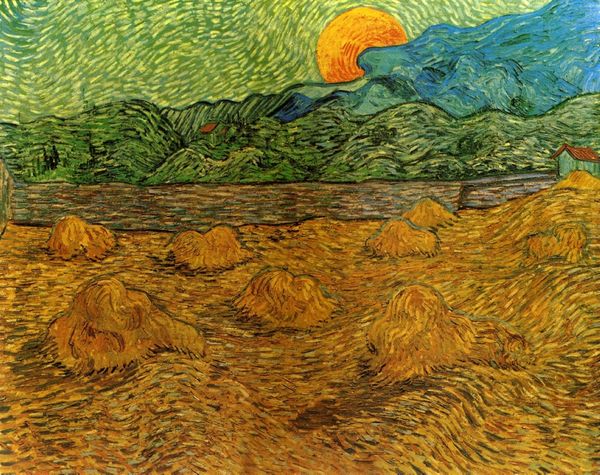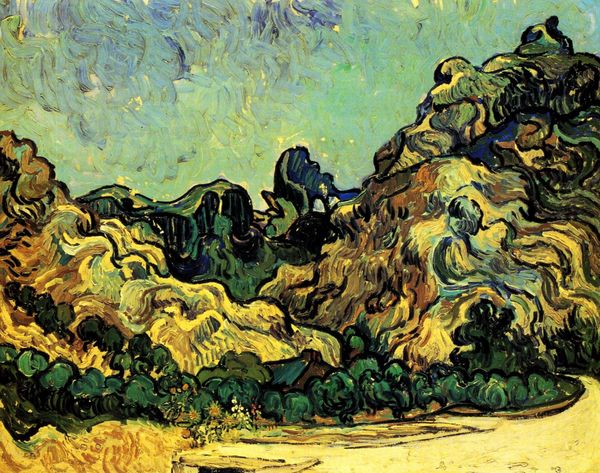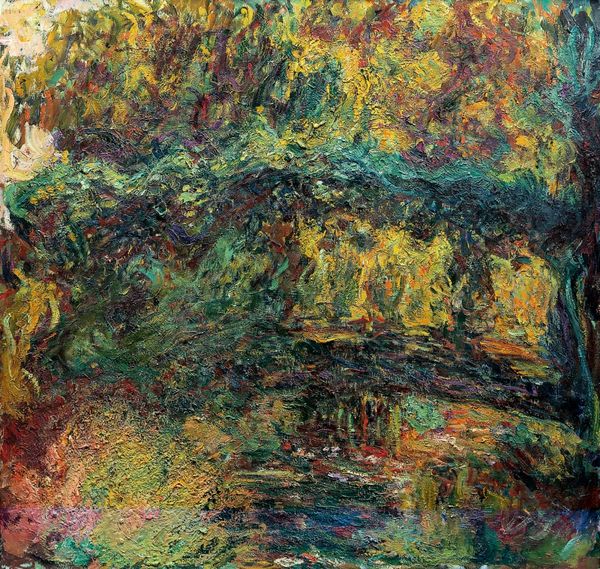
painting, oil-paint, impasto
#
organic
#
painting
#
grass
#
oil-paint
#
landscape
#
flower
#
nature colouring
#
impressionist landscape
#
impasto
#
plant
#
post-impressionism
Dimensions: 55 x 45.5 cm
Copyright: Public domain
Curator: What immediately strikes me is the suffocating, yet vibrating sea of green. It’s dense, alive, almost claustrophobic. Editor: We're looking at "Two White Butterflies", a landscape painted in 1889 by Vincent van Gogh, created with oil paint on canvas, and rendered with a thick impasto technique. It is presently held in the collection of the Van Gogh Museum in Amsterdam. Curator: Van Gogh really traps you within this confined space of foliage. Are the butterflies meant to symbolize anything within that… oppression, almost? Editor: Butterflies, throughout art history, are nearly always connected with transformation, the soul, resurrection. Here, though, consider that Van Gogh painted this piece near the end of his life, during his stay at the Saint-Paul-de-Mausole asylum in Saint-Rémy. Curator: That detail contextualizes everything. Given that symbolism and his environment, I can now recognize these fragile, pale insects perhaps represent Van Gogh's own longing for freedom, a hope for a brighter, less tormented existence in stark contrast with the overgrown verdant, green mass surrounding them. Editor: Exactly. The contrast, visually and symbolically, speaks volumes. The intense brushstrokes, the almost manic energy in the grass—it’s as if the landscape itself is a reflection of his inner turmoil, making the butterflies’ ethereal qualities stand out even more dramatically. I'm very curious about the botanical elements chosen and whether their meanings contributed as metaphors for personal liberation, confinement or observation. Curator: The sheer abundance of green can be read as overwhelming, representing an emotional and psychological imprisonment, perhaps even depression itself, yet simultaneously the image overflows with organic vitality and potential rebirth. A total paradox of contrasting iconographies playing out together. Editor: Yes, it makes me reflect on what freedom looks like for marginalized people and in oppressed societies, then and now. Curator: It leaves one feeling the tension of hope flickering in the face of adversity. Editor: Ultimately, it reveals how Van Gogh articulated such profound internal conflicts and observations in nature, through potent artistic symbols.
Comments
No comments
Be the first to comment and join the conversation on the ultimate creative platform.

